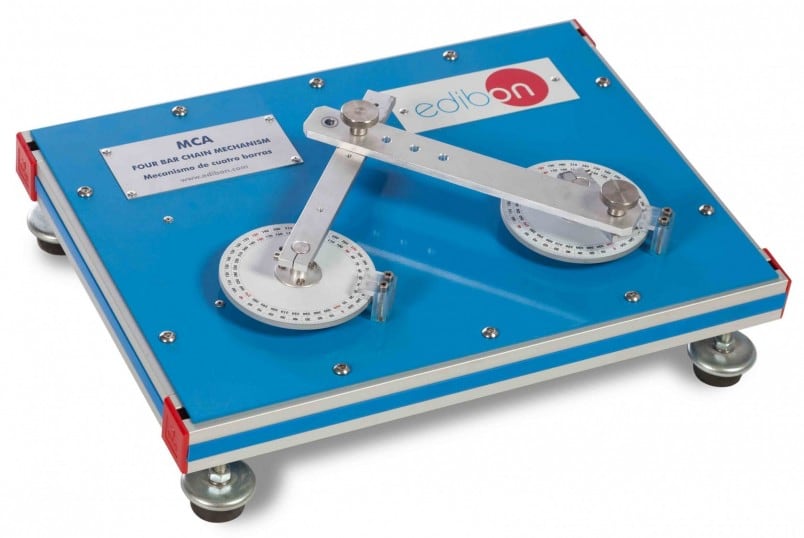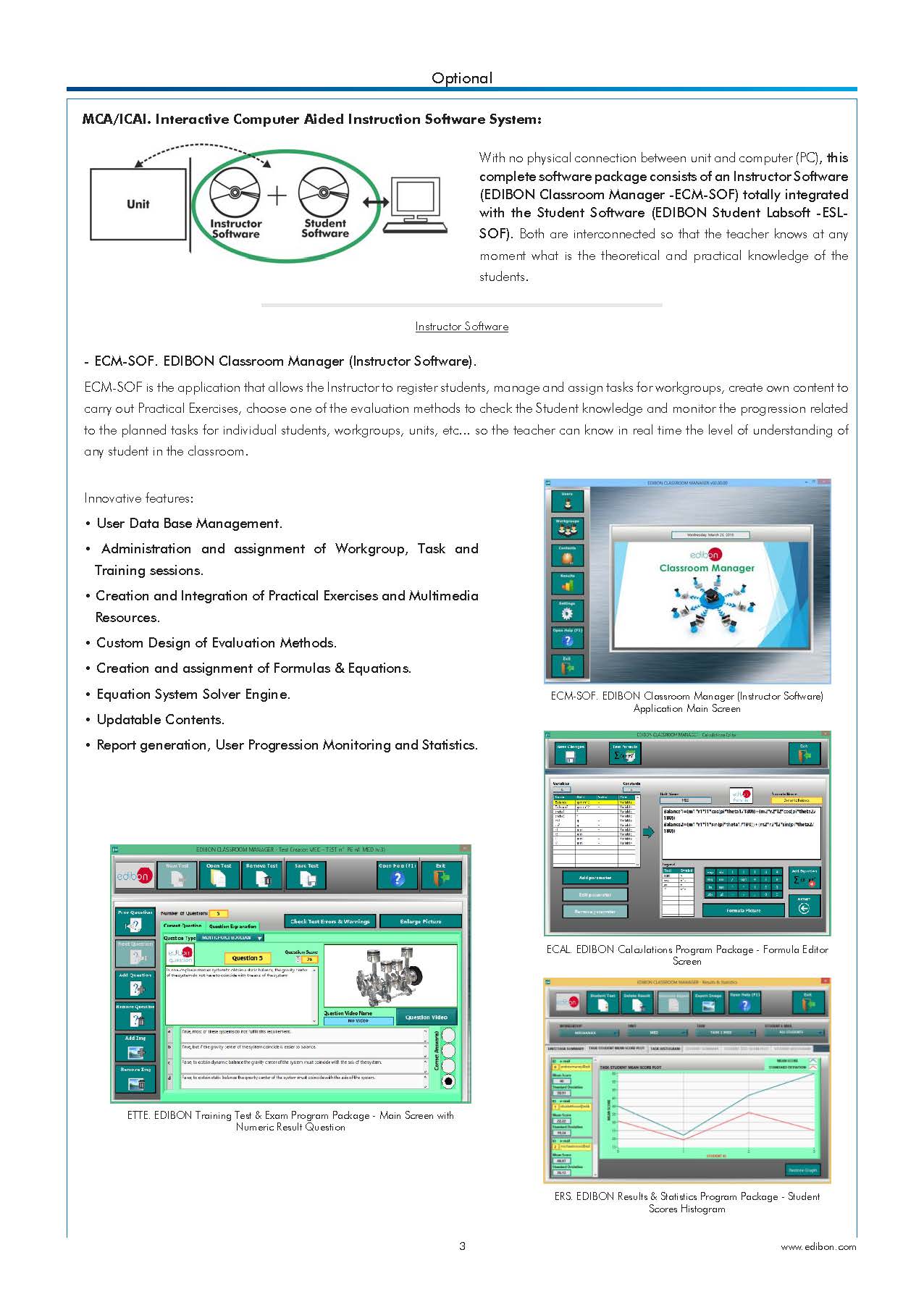
Four-Bar Mechanism
INTRODUCTION
The motion of a four-bar linkage is transformed into oscillatory motion.
The four-bar mechanism or quadrilateral linkage is a mechanism consisting on three movable bars and a fourth fixed bar (for example,the floor). The movable bars are linked to the fixed one through pivots. Grashof’s law is a formula used to analyze the type of movement made by the four-bar linkage mechanism: to obtain a continuous movement between the bars, the sum of the shortest bar and the longest bar cannot be greater than the sum of the remaining bars.
The four-bar linkage is one of the most commonly used kinematic mechanisms, for example in window hinges, conveyor belts, folding carts, etc.
The Four-Bar Mechanism, “MCA”, has been designed to demonstrate the action of a four bar mechanism with different geometrical arrangements of joints.
EXERCISES AND PRACTICAL POSSIBILITIES
- To demonstrate the action of a four-bar mechanism with different geometrical arrangements of joints.
- To demonstrate Grashof law.
- To determine graphically the relationship between the angular displacements of the input crank and the output joint of a simple four-bar system.
- To determine the velocity and acceleration of the output joint by graphical differentiation and compared with the values obtained in velocity and acceleration diagrams.



